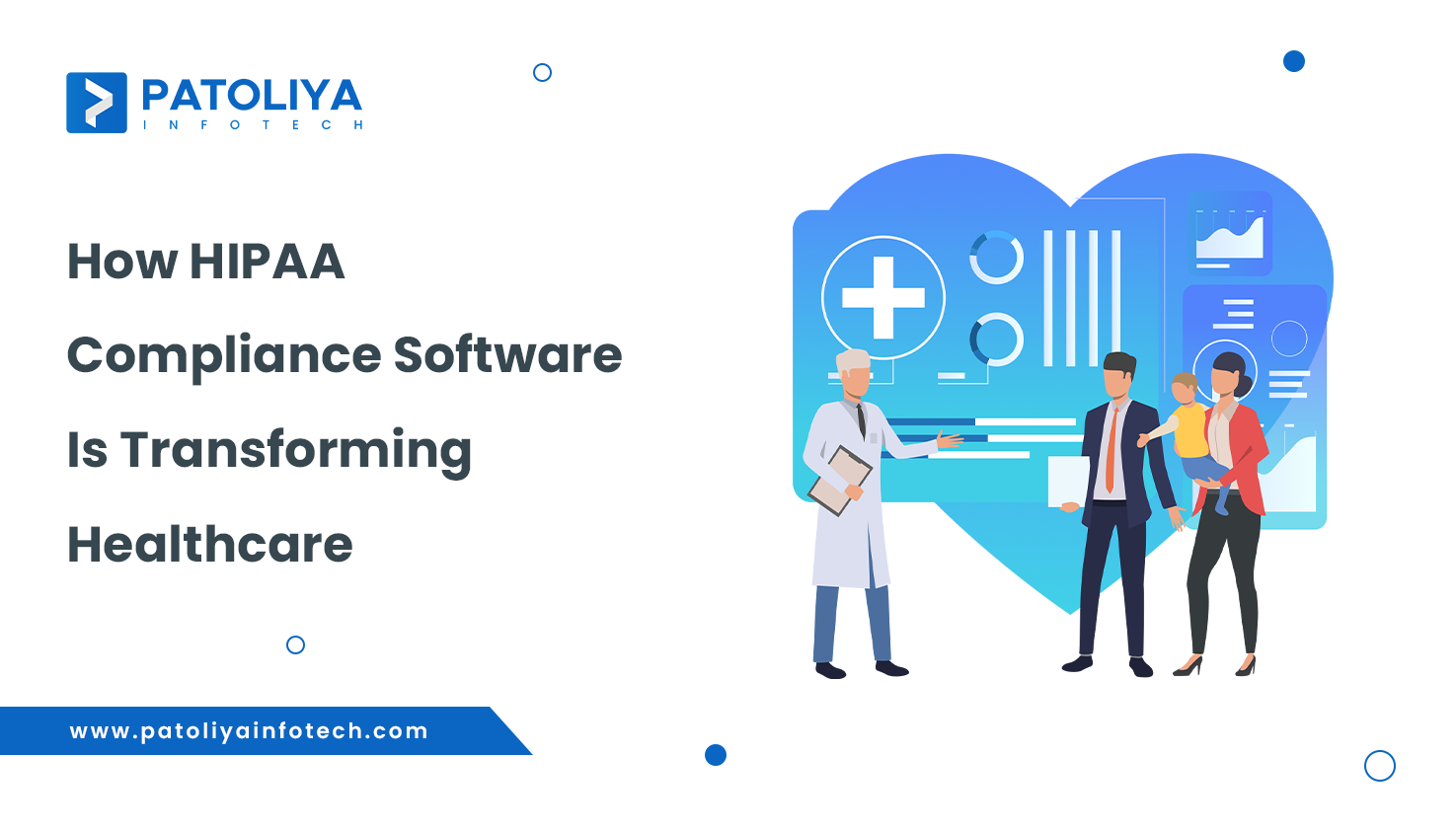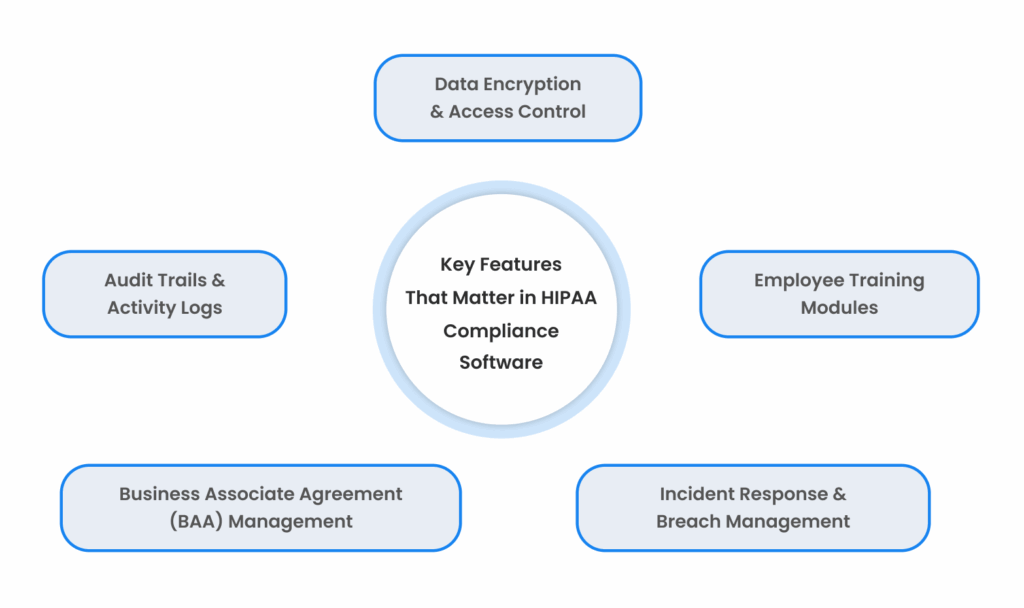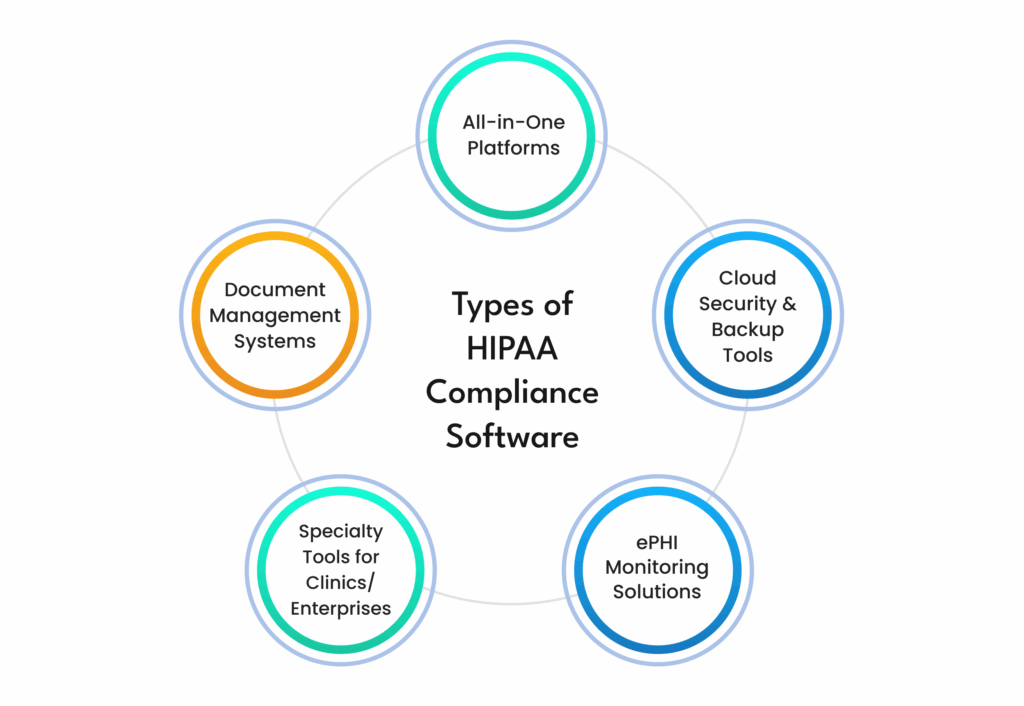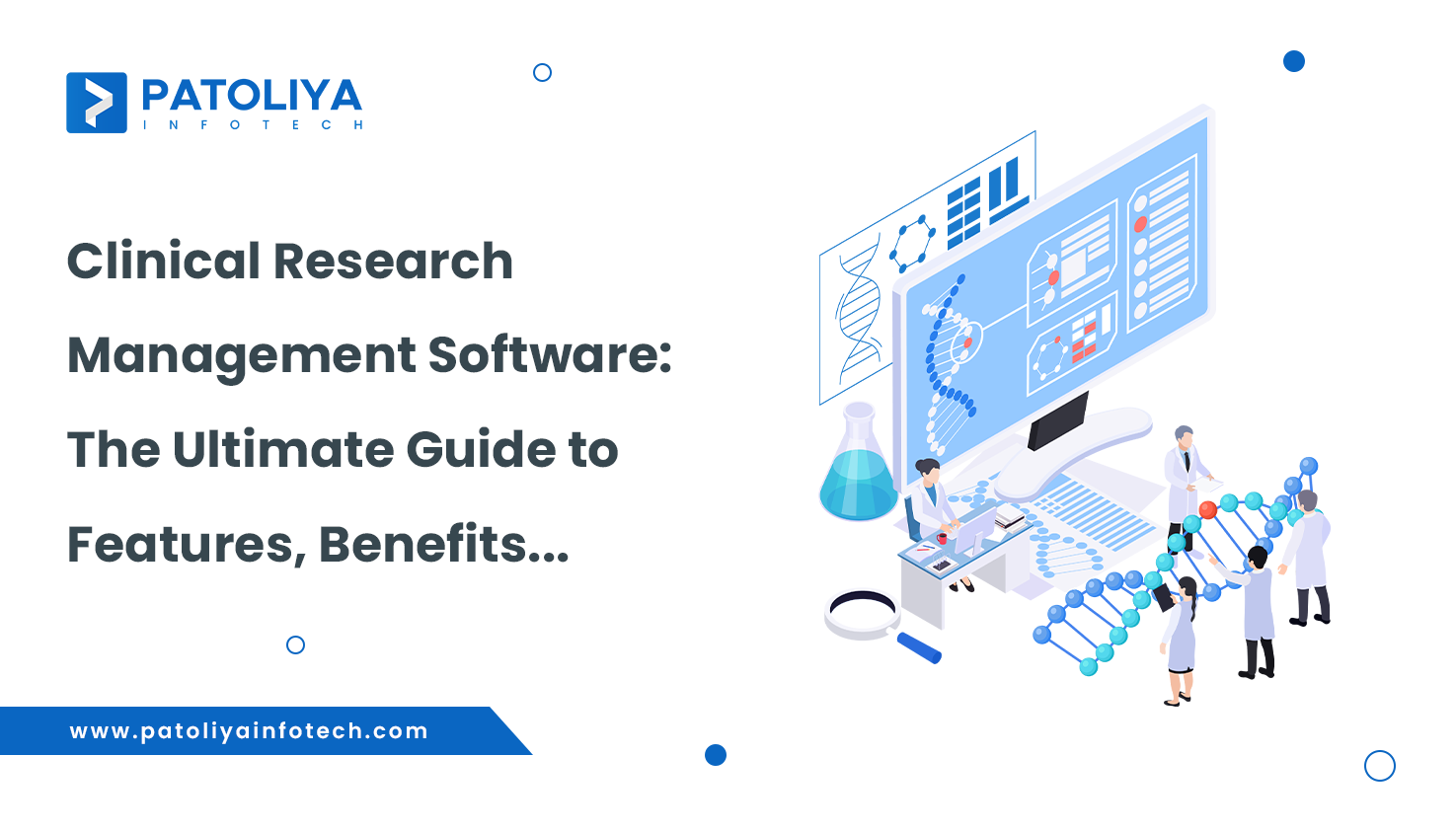Still Using Spreadsheets for HIPAA Compliance?

Table of Contents
It is impossible to ignore data while thinking about healthcare in 2025. Wearable technologies, medical platforms, and test results all produce, distribute, and store sensitive fitness data continuously. Keeping everything stable and confidential is a significant responsibility that goes along with it.
That’s exactly where HIPAA comes in.
The foundation of healthcare data security in the United States is HIPAA, short for the Health Insurance Portability and Accountability Act, which is not just a few outdated regulations. In the virtual-first world of today, it is applicable to much more than only clinics or hospitals. You are also subject to HIPAA whether you are starting a healthcare company, developing a SaaS platform that handles patient data, or simply providing cloud storage for clinical apps.
In actuality, compliance is no longer a choice. Regulators are keeping a closer eye on things, cyber threats are getting more advanced, and patients are demanding more openness about how their data is handled. Single mistakes may cost agencies thousands of dollars, not just in penalties, but also in lost confidence, litigation, and irreversible harm to their reputation.
For this reason, HIPAA compliance software has become important. It's mission-critical for tech companies in the healthcare sector, not a nice-to-have. Whether you are a cloud service issuer's compliance officer, a clinic's IT director, or the creator of a health software as a service, implementing HIPAA right in 2025 includes choosing the correct tools, staying ahead of the rules, and establishing security into your business's core values.
What is HIPAA Compliance Software?
HIPAA compliance software is a specialized tool designed to help organizations meet the strict requirements of the Health Insurance Portability and Accountability Act (HIPAA). Instead of juggling spreadsheets, policy docs, and manual checklists, this software centralizes and automates the entire compliance process—saving time, reducing errors, and minimizing legal risk.
At its core, HIPAA compliance software helps with:
- Risk assessments and audits
- Employee training and certification tracking
- Policy management and documentation
- Breach reporting and response workflows
- Secure storage of sensitive health data
Hospitals and clinics are not the only organizations that employ it. These systems are used by cloud storage companies, third-party service providers, healthtech startups, SaaS providers that handle PHI, and even IT consultants to maintain compliance and audit readiness.

On a small scale, manual compliance could be effective, but when your tech stack expands or requirements change, it soon becomes overwhelming. In 2025, software-based compliance will be the safer and more intelligent option since it scales better and offers real-time tracking, automated upgrades, and transparent audit trails.
Key Features to Look for in HIPAA Compliance Software
HIPAA compliance technologies are not all created equal. The ideal software should do more than just check boxes; it should streamline your processes, strongly lower your risk, and ensure that you are always audit-ready. The following characteristics are what really count:

- Data Encryption & Access Control
PHI must be stabilized by your program both when traveling and while you're relaxing. Seek strong encryption methods and the ability to restrict access according to certain fact sets, clearance ranges, or responsibilities. - Audit Trails & Activity Logs
All movements, alternates, and rights of entrance must be recorded. This is your proof in the event of a breach or audit. Make sure the software displays unique logs that are easy to check and may be tamper-evidence. - Risk Assessment Tools
Everyday risk assessments are mandated by HIPAA. You can detect vulnerabilities, score risks, and create evaluations that demonstrate your mitigation efforts with the help of good software. - Incident Management
How quickly can you respond in the event of a breach? In accordance with HIPAA requirements, your device must provide clear processes for identifying, recording, reporting, and resolving events. - Business Associate Agreement (BAA) Support
BAAs are required if you operate with carriers who handle PHI. There shouldn't be any problems from office work or chasing down guides while manipulating, maintaining, and tracking signed agreements thanks to the program. - Employee Training Modules
The most frequent reason for HIPAA mistakes is still human error. To train your staff and demonstrate compliance, use software with integrated, trackable training courses.
Not only are these features "nice to have," but they are what set genuine compliance tools apart from generic security systems.
Types of HIPAA Compliance Software
HIPAA compliance isn't universally applicable. The Organization, size, and handling of protected health information (PHI) inside your business all influence the choice of technology. This is a brief overview of the primary categories of HIPAA compliance software for 2025:

- All-in-One Platforms
These are all-inclusive solutions that address everything, including incident response, audit logs, documentation, training, and threat assessments. Ideal for teams who wish to have a single location without having to manage several pieces of equipment. - Document Management Systems
Designed for tracking, protecting, and managing HIPAA-related procedures, paperwork, and regulations. Perfect for companies that want fine-grained model manipulation and audit ready without going full-scale. - Cloud Security & Backup Tools
focused on safeguarding PHI that is kept on cloud servers. The encryption, access control, automated backups, and recovery capabilities of these devices are essential for SaaS businesses or healthcare teams utilizing cloud infrastructure. - ePHI Monitoring Solutions
These technologies focus on monitoring electronic PHI in real time. They assist in identifying unwanted access, highlighting irregularities, and making sure private information isn't misused or exposed across networks. - Specialty Tools for Small Practices vs. Large Enterprises
Lightweight, reasonably priced tools are necessary for solo practices or smaller clinics; these tools are usually centered on training, BAAs, and minimal documentation. On the other hand, scalable systems with multi-layered security controls, powerful analytics, and integrations are necessary for large companies.
For clinical trial platforms or research-focused SaaS tools that handle PHI, choosing HIPAA-compliant clinical research software is critical. If you're in this space, our in-depth guide on Clinical Research Management Software: The Ultimate Guide for 2025 breaks down what to look for.
Fit is more important when selecting a type than characteristics alone. The HIPAA compliance software that best suits your development stage, risk profile, and workflow is the best option.
Benefits of Using HIPAA Compliance Software
Utilizing HIPAA compliance software is about improving how you protect sensitive health information and managing your business more efficiently, not only meeting regulatory requirements:
- Automating Compliance Processes
Paperwork and manual monitoring are slow and prone to mistakes. Software frees up your team to focus on what practically matters by automating chance checks, documentation, teaching, and reporting. - Minimizing Human Error
The majority of HIPAA violations are the result of straightforward mistakes. Workflows, standard operating procedures, and built-in indications reduce such dangers, making your data safer and your company less troubled. - Enhancing Trust with Patients and Partners
Self-assurance is increased when compliance is open and well-managed. Partners realize you are taking records protection seriously, and patients feel secure sharing their data—opening doors to new opportunities. - Scalability for Growing Businesses
Whether you are a small clinic or a rapidly growing SaaS startup, your compliance software program will expand along with you. It seamlessly adjusts to new rules, increased information volume, and growing teams.
In short, HIPAA compliance software transforms a complicated and expensive burden into a proactive and efficient benefit.
How to Choose the Right HIPAA Compliance Software
The first step in selecting the best HIPAA compliance software is understanding your unique requirements, whether they are risk management, training automation, or protecting the information of affected individuals. Inquire about vendors' approaches to incident control, audit trails, and updates while evaluating options.
Make sure the software program simply interacts with your current structures, such as CRMs and EHRs, and keep an eye out for hidden costs like fees for additional clients or top-rate assistance. This simplifies things and maintains the safe movement of your records between structures.
The “right” HIPAA software often depends on your field—dental practices may need different features than mental health providers. For a broader view of what various specialties need, check out our guide on Specialized Healthcare Software by Medical Field.
Finding a solution that meets your compliance requirements without causing additional problems may be achieved by concentrating on these fundamentals.
Compliance Checklist: What Your Software Must Cover
Make sure the software you select satisfies all of HIPAA's requirements before selecting any HIPAA compliance software. Now, it's about building a whole ecosystem of safety rather than just safely storing data.
Administrative safeguards are the first step toward that. Strong internal policies, regular staff training, and recorded threat assessments should all be supported by your software. Without these, all else is simply floor-degree. They are the muse of conformity.
The physical safeguards measures come next. If the physical surroundings are vulnerable, even the most stable software will not work well. Your compliance solution must help enforce access control and device safety across all endpoints, regardless of whether your data is housed in-house or in the cloud.
Next are the technological safeguards, which form the backbone of safeguarding information about digital health. Strong encryption, layered access control, secure login procedures, and activity monitoring are all features that your software should have to make sure that only the right people can access sensitive information and that every action can be tracked.

Finally, there are organizational requirements, which are important but sometimes overlooked. This involves monitoring supplier compliance, administering Business Associate Agreements (BAAs), and maintaining accurate records of who has access to what and why. Good software makes it simple to demonstrate compliance, not just help you live it.
If your compliance software is unable to handle all of these areas, you run the danger of not just failing an audit but also having an impacted individual agree with you. Verify that the foundation is solid.
Common Mistakes to Avoid When Using Compliance Software
Myths about HIPAA compliance software include the idea that installing it marks the end of the process. Now it isn't. The software is not a panacea; it is a tool. Genuine compliance requires people, processes, and continuous attention.
The human element of compliance, including staff training and appropriate documentation, is often overlooked when an excessive amount of emphasis is placed on the software. If your staff has the necessary skills to handle PHI effectively or is unaware of the correct procedures, you still face serious risks even with a good platform in the area.
Forgetting to update your inner guidelines is another challenge. Your compliance posture should adapt to the changing HIPAA expectations. Software can help with flag revisions, but to stay in line with cutting-edge standards, you must continuously review and update your laws.
To put it simply, compliance isn't so much about having the right software program as it is about using it correctly, consistently, and internally.
HIPAA Compliance Software vs. Managed Services
| Aspect | HIPAA Compliance Software (DIY) | Managed Compliance Services |
| Control & Visibility | High – You manage everything internally with full transparency | Moderate – Most processes are handled by the provider |
| Cost | Lower long-term cost, usually subscription-based | Higher – often includes onboarding + recurring service fees |
| Flexibility | Easily customizable to fit internal workflows | Limited – depends on the service provider’s scope |
| Expertise Required | Requires some internal understanding of HIPAA | Minimal – provider brings regulatory expertise |
| Scalability | Ideal for growing SaaS or healthcare companies | May require contract updates or scaling fees |
| Ongoing Maintenance | You’re responsible for updates, training, and audits | Provider handles everything for you |
| Best For | Startups, SaaS providers, in-house IT or compliance teams | Small practices, understaffed teams, non-technical orgs |
Legal and Regulatory Updates to Watch (2025 & Beyond)
HIPAA is always changing, and 2025 is already looking like it will be a busy year. As the technology for virtual fitness advances, so are regulatory expectations. Important changes include stricter limits on third-party records processors, more strict deadlines for breach notifications, and an increasing focus on real-time security monitoring, all of which have an immediate impact on how compliance software programs must function.
Your innovative response is slipping if it doesn't change. By selecting software that delivers automated coverage updates, stays ahead of legal changes, and facilitates integration with cutting-edge technology like AI-driven tracking or sophisticated encryption standards, you can future-proof your compliance strategy. Latest HIPAA compliance updates in 2025.
Regulators change quickly. The software you are using wants to move more quickly.
Conclusion: Is HIPAA Compliance Software Worth It?
Regardless of whether you are a cloud-based business, SaaS provider, or healthcare provider, the answer is unquestionably yes for any corporation managing protected health information.
Saving time isn't the only benefit of the investment, but it is. Avoiding the significant costs of non-compliance—from penalties and legal risks to harm to one's reputation—is the goal. You can remain up to date with changing laws, automate tedious activities, and demonstrate—on paper—that you take HIPAA seriously using compliance software. That level of responsibility and visibility might be the difference between passing an audit and getting hit with a six-figure fine.
But it's about establishing confidence even beyond the legal protection. Clients, partners, and patients all want to be sure that their data is secure. You are credible when you have the proper procedures in place, not merely compliant.
The ideal method? HIPAA compliance is neither a one-time event or a box to be checked. Utilize software to make it a continuous, integrated aspect of your business processes. Select a service who keeps up with the latest regulations so you're never behind.



